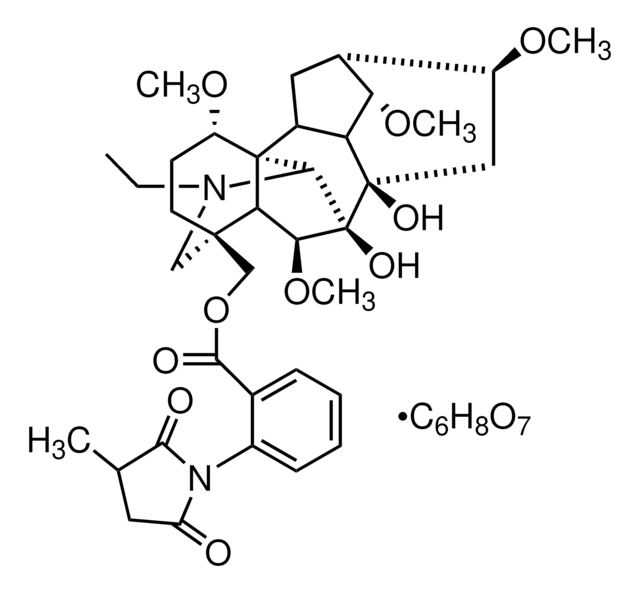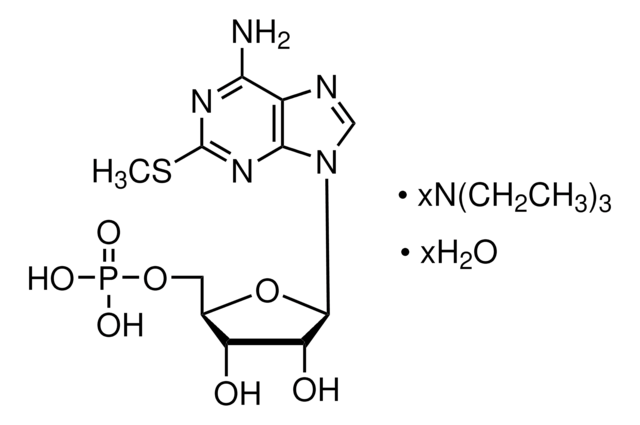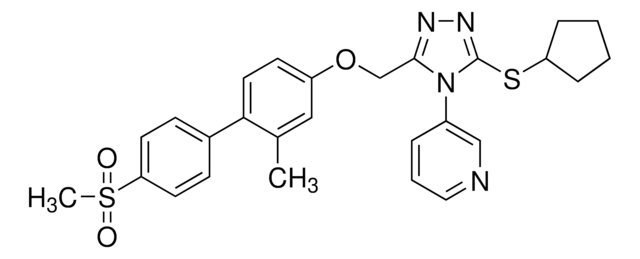P6124
5-(4-Phenoxybutoxy)psoralen
≥98% (HPLC), solid
Synonym(s):
PAP-1
About This Item
Recommended Products
Assay
≥98% (HPLC)
form
solid
storage condition
protect from light
color
white
solubility
DMSO: 9 mg/mL
storage temp.
2-8°C
SMILES string
O=C1Oc2cc3occc3c(OCCCCOc4ccccc4)c2C=C1
InChI
1S/C21H18O5/c22-20-9-8-16-19(26-20)14-18-17(10-13-24-18)21(16)25-12-5-4-11-23-15-6-2-1-3-7-15/h1-3,6-10,13-14H,4-5,11-12H2
InChI key
KINMYBBFQRSVLL-UHFFFAOYSA-N
Biochem/physiol Actions
Features and Benefits
Signal Word
Danger
Hazard Statements
Precautionary Statements
Hazard Classifications
Resp. Sens. 1
Storage Class Code
11 - Combustible Solids
WGK
WGK 3
Flash Point(F)
Not applicable
Flash Point(C)
Not applicable
Personal Protective Equipment
Certificates of Analysis (COA)
Search for Certificates of Analysis (COA) by entering the products Lot/Batch Number. Lot and Batch Numbers can be found on a product’s label following the words ‘Lot’ or ‘Batch’.
Already Own This Product?
Find documentation for the products that you have recently purchased in the Document Library.
Articles
We offer many products related to potassium channels for your research needs.
Our team of scientists has experience in all areas of research including Life Science, Material Science, Chemical Synthesis, Chromatography, Analytical and many others.
Contact Technical Service








